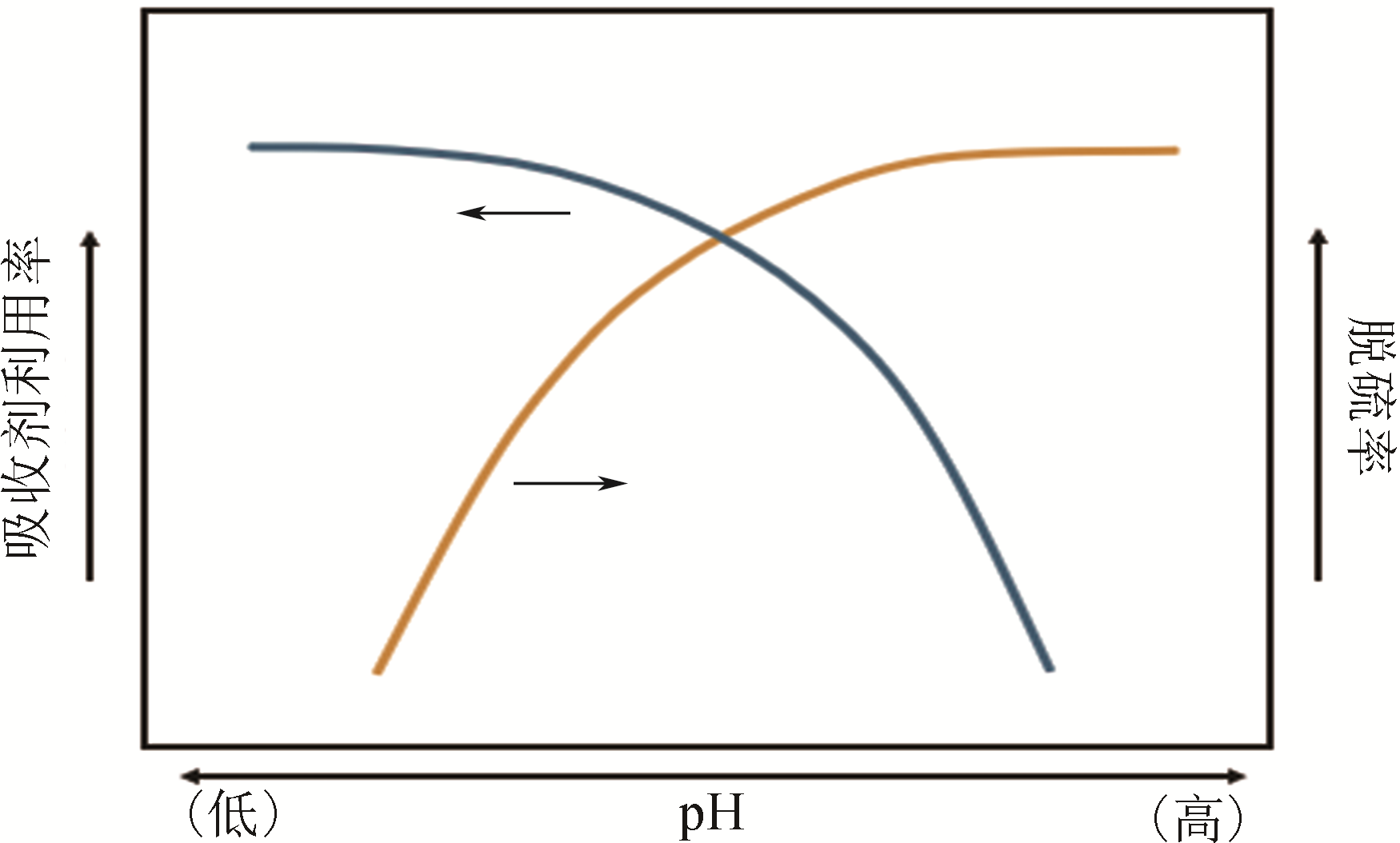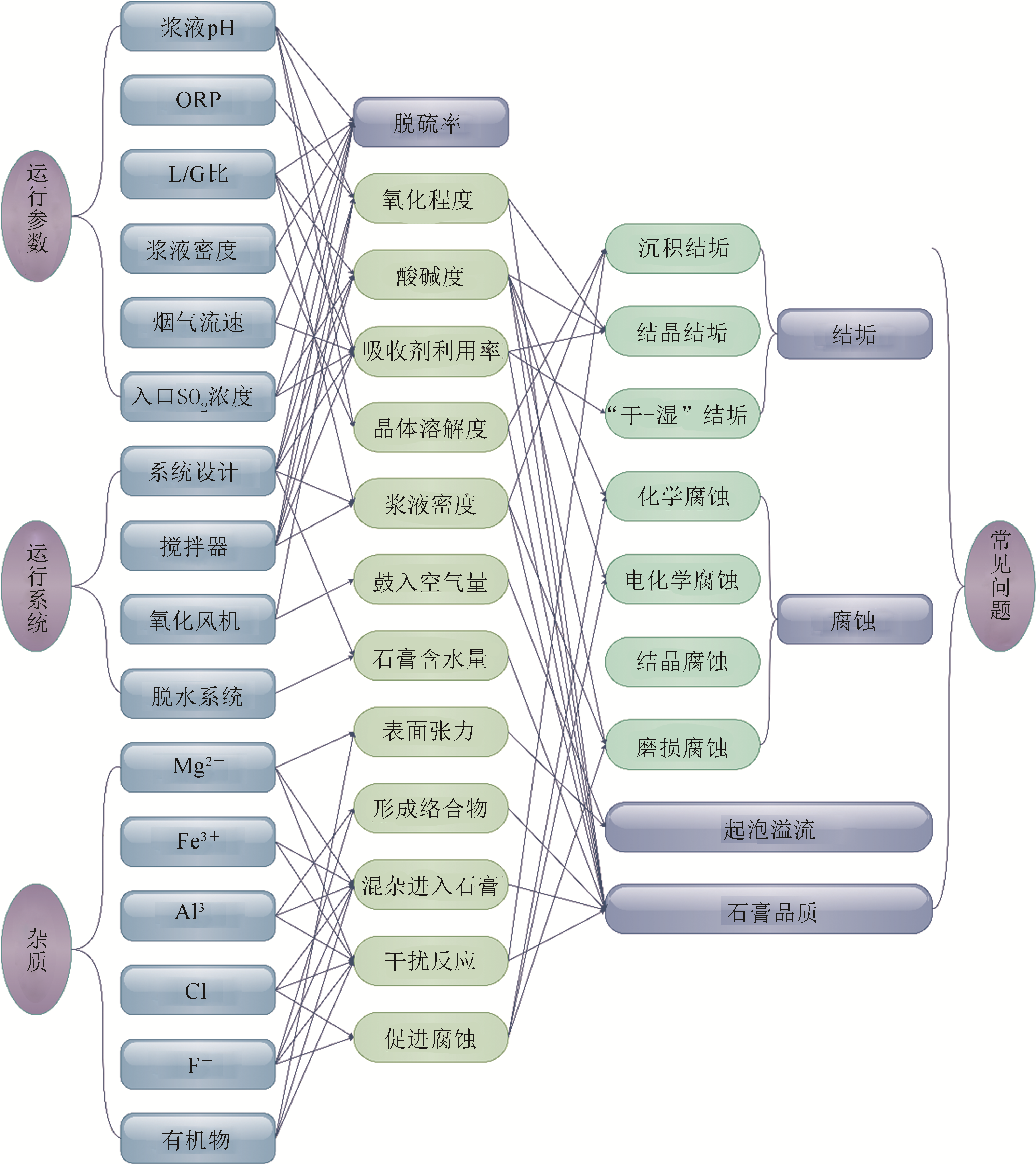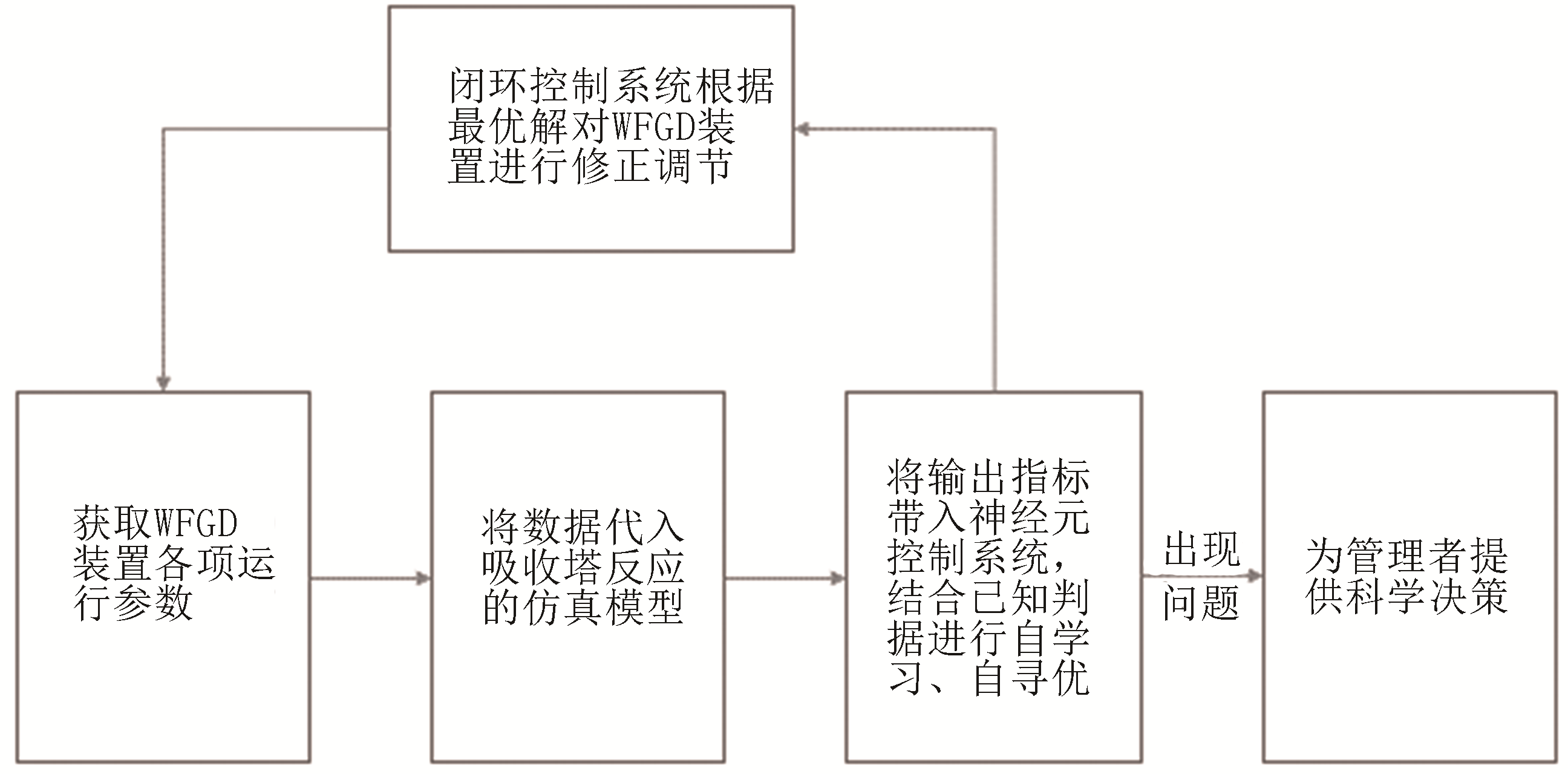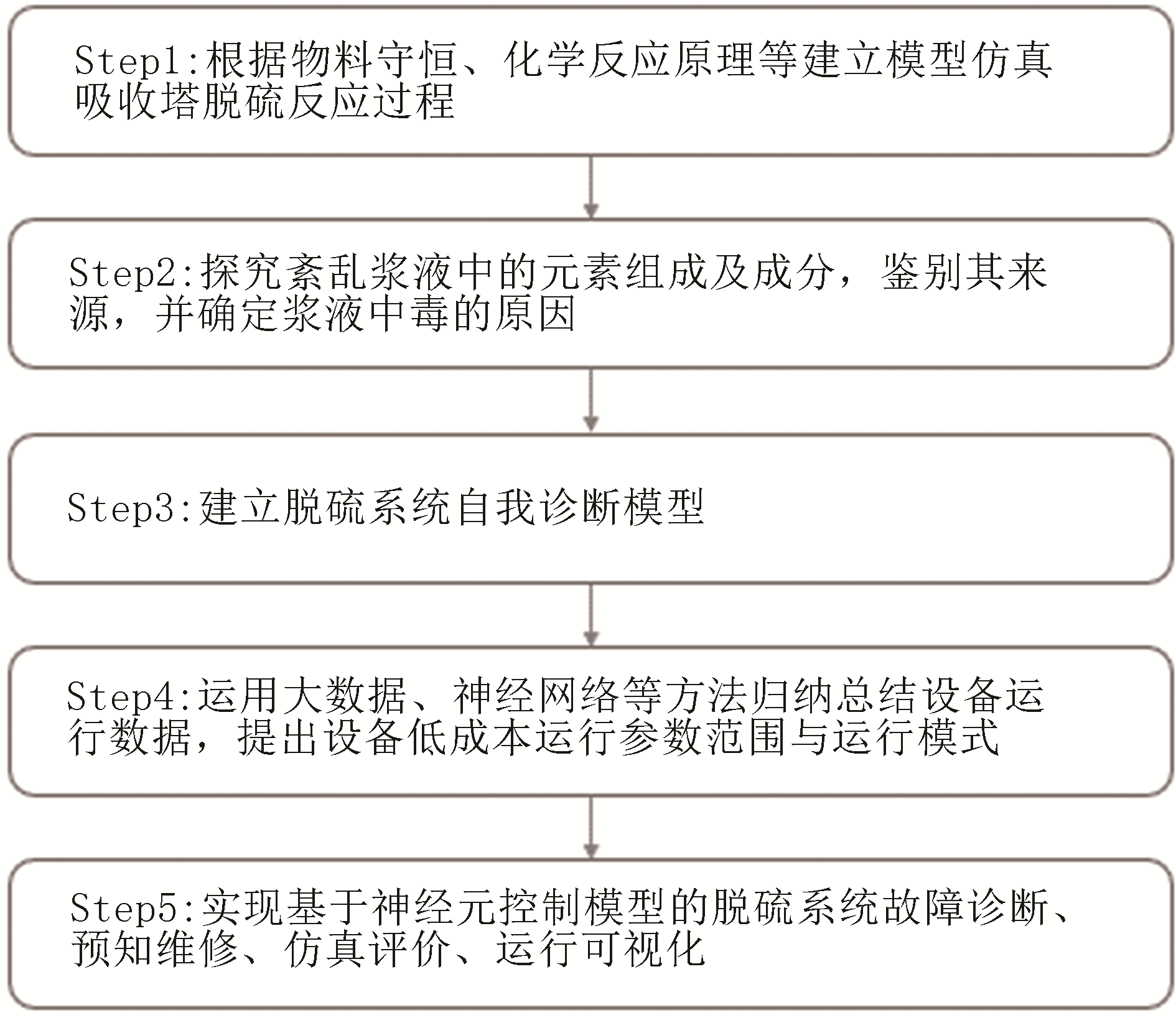| 1 |
武春锦, 吕武华, 梅毅, 等. 湿法烟气脱硫技术及运行经济性分析[J]. 化工进展, 2015, 34(12): 4368-4374.
|
|
WU Chunjin, Wuhua LÜ, MEI Yi, et al. Analysis of wet flue gas desulfurization technology and operation economy[J]. Chemical Industry and Engineering Progress, 2015, 34(12): 4368-4374.
|
| 2 |
杜佳, 张健. 一种脱硫阻垢剂在湿法脱硫系统的应用研究[J]. 电力科技与环保, 2016, 32(3): 34-37.
|
|
DU Jia, ZHANG Jian. Application of a desulfurization and scale inhibitor in wet desulfurization system[J]. Electric Power Technology and Environmental Protection, 2016, 32(3): 34-37.
|
| 3 |
LI Wending, GAO Huihua, CAI Wenfeng. Scaling analysis and preventive measures of limestone-gypsum wet flue gas desulfurization[J]. Power Generation Technology, 2019, 40(1): 51-55.
|
| 4 |
赵峰涛. 石灰石-石膏湿法脱硫二氧化硫排放影响因素分析[J]. 中文信息, 2016(8): 277-278.
|
|
ZHAO Fengtao. Analysis of influencing factors of sulfur dioxide emission from limestone-gypsum wet desulfurization[J]. Chinese Information, 2016(8): 277-278.
|
| 5 |
樊彦玲, 祝文, 马稳锋. 脱硫塔入口烟道结垢问题浅析[J]. 化工设计通讯, 2017, 43(1): 65, 87.
|
|
FAN Yanling, ZHU Wen, MA Wenfeng. Analysis of fouling in the flue of the inlet of the desulfurization tower[J]. Chemical Engineering Design Communications, 2017, 43(1): 65, 87.
|
| 6 |
鄢行龙. 湿法烟气脱硫系统结垢腐蚀问题分析[J]. 中国环保产业, 2011(10): 59-61.
|
|
YAN Henglong. Analysis on scaling and corrosion of wet flue gas desulfurization system[J]. China Environmental Protection Industry, 2011(10): 59-61.
|
| 7 |
GONG Y, YANG Z G. Corrosion evaluation of one wet desulfurization equipment-flue gas desulfurization unit[J]. Fuel Processing Technology, 2018, 181: 279-293.
|
| 8 |
汪波, 刘晶. 石灰石-石膏法烟气脱硫运行中常见问题浅析[J]. 中国环保产业, 2011(3): 61-66.
|
|
WANG Bo, LIU Jing. Analysis of common problems in the operation of limestation-gypsum flue gas desulfurization[J]. China Environmental Protection Industry, 2011(3): 61-66.
|
| 9 |
ZENG Y, LI K, HUGHES R, et al. Corrosion mechanisms and materials selection for the construction of flue gas component in advanced heat and power systems[J]. Industrial & Engineering Chemistry Research, 2017, 56(48): 14141-14154.
|
| 10 |
赵毅, 沈艳梅. 湿式石灰石/石膏法烟气脱硫系统的防腐蚀措施[J]. 腐蚀与防护, 2009, 30(7): 495-498.
|
|
ZHAO Yi, SHEN Yanmei. Corrosion prevention measures of wet limestone/gypsum flue gas desulfurization system[J]. Corrosion and Protection, 2009, 30(7): 495-498.
|
| 11 |
曾会华. 石灰石-石膏湿法脱硫系统设备腐蚀等问题浅析及防范措施[J]. 化工管理, 2014(32): 161-163, 165.
|
|
ZENG Huihua. Analysis of equipment corrosion and other problems in lime-gypsum wet desulfurization system and preventive measures[J]. Chemical Enterprise Management, 2014(32): 161-163, 165.
|
| 12 |
宋炎. 脱硫浆液组成变化对起泡影响机理研究[D]. 淮南: 安徽理工大学, 2018.
|
|
SONG Yan. Study on the mechanism of the effect of composition change of desulfurization slurry on foaming[D]. Huainan: Anhui University of Science and Technology, 2018.
|
| 13 |
贾西部, 金万元, 李兴华. 石灰石-石膏湿法烟气脱硫系统浆液起泡原因分析[J]. 中国电力, 2015, 48(9): 157-160.
|
|
JIA Xibu, JIN Wanyuan, LI Xinghua. Analysis of reasons for slurry foaming in limestone-gypsum wet flue gas desulfurization system[J]. Electric Power, 2015, 48(9): 157-160.
|
| 14 |
刘义, 范婉坤. 石灰石-石膏法脱硫系统浆液起泡溢流分析[J]. 广东科技, 2016, 25(11): 137-138.
|
|
LIU Yi, FAN Wankun. Analysis of bubbling overflow of slurry in limestone-gypsum desulfurization system[J]. Guangdong Science and Technology, 2016, 25(11): 137-138.
|
| 15 |
王瑶瑶, 包文运, 高良敏. 石灰石-石膏湿法烟气脱硫浆液起泡溢流研究[J]. 环保科技, 2017, 23(2): 34-37.
|
|
WANG Yaoyao, BAO Wenyun, GAO Liangmin. Study on foaming overflow of limestite-gypsum wet flue gas desulfurization slurry[J]. Environmental Science and Technology, 2017, 23(2): 34-37.
|
| 16 |
张岳. 脱硫浆液池起泡溢流的实验研究[D]. 北京: 华北电力大学(北京), 2016.
|
|
ZHANG Yue. Experimental study on bubbling overflow of desulfurization slurry tank[D]. Beijing: North China Electric Power University (Beijing), 2016.
|
| 17 |
汪浩, 李勇辉, 王群英, 等. 脱硫石膏品质控制及资源化利用[J]. 新型建筑材料, 2017, 44(5): 63-66.
|
|
WANG Hao, LI Yonghui, WANG Qunying, et al. Quality control and resource utilization of desulfurized gypsum[J]. New Building Material, 2017, 44(5): 63-66.
|
| 18 |
吴占兴. 火电厂烟气脱硫(湿法)石灰石粉地方标准的比较[J]. 科技创新与应用, 2015(5): 1-2.
|
|
WU Zhanxing. Comparison of local standards for limestone powder of flue gas desulfurization (wet method) in thermal power plants[J]. Technology Innovation and Application, 2015(5): 1-2.
|
| 19 |
王凯, 张庆国, 田富中. 湿法脱硫石膏特性研究进展[J]. 环境工程, 2016, 34(S1): 448-451.
|
|
WANG Kai, ZHANG Qingguo, TIAN Fuzhong. Research progress on characteristics of wet desulfurization gypsum[J]. Environmental Engineering, 2016, 34 (S1): 448-451.
|
| 20 |
CÓRDOBA P. Status of flue gas desulphurisation (FGD) systems from coal-fired power plants: overview of the physic-chemical control processes of wet limestone FGDs[J]. Fuel, 2015, 144: 274-286.
|
| 21 |
尹连庆, 郭静娟. 石灰石-石膏湿法脱硫系统石灰石品质试验研究[J]. 电力科技与环保, 2011, 27(1): 25-27.
|
|
YIN Lianqing, GUO Jingjuan. Experimental study on limestone quality of limestone-gypsum wet desulfurization system[J]. Electric Power Technology and Environmental Protection, 2011, 27(1): 25-27.
|
| 22 |
徐铮. 脱硫石膏品质控制技术及其资源化研究[D]. 保定: 华北电力大学(保定), 2008.
|
|
XU Zheng. Quality control technology and resource recovery of desulfurized gypsum[D]. Baoding: North China Electric Power University (Baoding), 2008.
|
| 23 |
程开开. 燃煤锅炉脱硫系统浆液及石膏成分测试分析研究[D]. 杭州: 中国计量大学, 2016.
|
|
CHENG Kaikai. Analysis and test of slurry and gypsum composition in desulfurization system of coal-fired boiler[D]. Hangzhou: China Jiliang University, 2016.
|
| 24 |
张东平, 李乾军, 刘献锋, 等. 湿法烟气脱硫反应过程的实验研究[J]. 环境工程学报, 2012, 6(9): 3205-3209.
|
|
ZHANG Dongping, LI Qianjun, LIU Xianfeng, et al. Experimental study on wet flue gas desulfurization reaction process[J]. Chinese Journal of Environmental Engineering, 2012, 6(9): 3205-3209.
|
| 25 |
颜磊. 浅谈影响燃煤电厂脱硫石膏品质主要因素及改善措施[J]. 科学技术创新, 2018(30): 144-145.
|
|
YAN Lei. Main factors affecting the quality of desulfurized gypsum in coal-fired power plants and improvement measures[J]. Science and Technology Innovation, 2018(30): 144-145.
|
| 26 |
KORALEGEDARA N H, PINTO P X, DIONYSIOU D D, et al. Recent advances in flue gas desulfurization gypsum processes and applications—A review[J]. Journal of Environmental Management, 2019, 251: 109572.
|
| 27 |
洪智晟. 电厂脱硫石膏含水量过高原因分析及应对措施[J]. 城市建设理论研究(电子版), 2017(29): 142.
|
|
HONG Zhisheng. Analysis of causes and countermeasures for excessive water content of desulfurized gypsum in power plants[J]. Urban Construction Theory Research (Electronic Edition), 2017(29): 142.
|
| 28 |
王邦林, 沙桐. 人工智能与神经网络在电力系统中的应用研究[J]. 山东工业技术, 2019(17): 144, 185.
|
|
WANG Banglin, SHA Tong. Application of artificial intelligence and neural network in power system[J]. Shandong Industrial Technology, 2019(17): 144, 185.
|
| 29 |
杨维波. 神经网络专家系统在脱硫控制系统中的应用[D]. 保定: 华北电力大学(保定), 2008.
|
|
YANG Weibo. Application of neural network expert system in desulfurization control system[D]. Baoding: North China Electric Power University (Baoding), 2008.
|
| 30 |
王涛, 潘维加. 吸收塔浆液pH值单神经元控制仿真研究[J]. 自动化与仪器仪表, 2018(12): 37-39, 43.
|
|
WANG Tao, PAN Weijia. Simulation of single neuron control of pH value of absorption tower slurry[J]. Automation and Instrumentation, 2018 (12): 37-39, 43.
|
| 31 |
郭为民, 张广涛, 李炳楠, 等. 火电厂智能化建设规划与技术路线[J]. 中国电力, 2018, 51(10): 17-25.
|
|
GUO Weimin, ZHANG Guangtao, LI Bingnan, et al. Intelligent construction planning and technical route of thermal power plants[J]. Electric Power, 2018, 51(10): 17-25.
|
| 32 |
DUER S, ZmAJKOWSKI K. Taking decisions in the expert intelligent system to support maintenance of a technical object on the basis information from an artificial neural network[J]. Neural Computing and Applications, 2013, 23(7/8): 2185-2197.
|
| 33 |
吴记保. 湿法烟气脱硫系统数学建模与仿真分析[D]. 重庆: 重庆大学, 2006.
|
|
WU Jibao. Mathematical modeling and simulation analysis of wet flue gas desulfurization system[D]. Chongqing: Chongqing University, 2006.
|
| 34 |
陈尔鲁. 湿法烟气脱硫过程建模与优化[D]. 杭州: 浙江大学, 2016.
|
|
CHEN Erlu. Modeling and optimization of wet flue gas desulfurization process[D]. Hangzhou: Zhejiang University, 2016.
|
| 35 |
张悦, 韩璞, 张想. 石灰石-湿法烟气脱硫吸收塔仿真模型设计与研究[J]. 系统仿真学报, 2019, 31(2): 238-247.
|
|
ZHANG Yue, HAN Pu, ZHANG Xiang. Design and study of simulation model of limestone-wet flue gas desulfurization absorption tower[J]. Journal of System Simulation, 2019, 31(2): 238-247.
|
 ), 刘琦2, 陈文通1, 樊帅军2, 要亚坤1, 周权2, 马采妮2, 林宸雨2, 马双忱2(
), 刘琦2, 陈文通1, 樊帅军2, 要亚坤1, 周权2, 马采妮2, 林宸雨2, 马双忱2( )
)
 ), Qi LIU2, Wentong CHEN1, Shuaijun FAN2, Yakun YAO1, Quan ZHOU2, Caini MA2, Chenyu LIN2, Shuangchen MA2(
), Qi LIU2, Wentong CHEN1, Shuaijun FAN2, Yakun YAO1, Quan ZHOU2, Caini MA2, Chenyu LIN2, Shuangchen MA2( )
)



